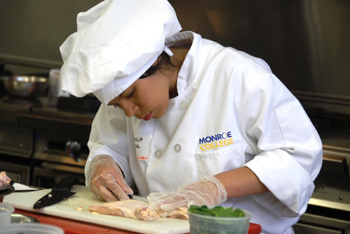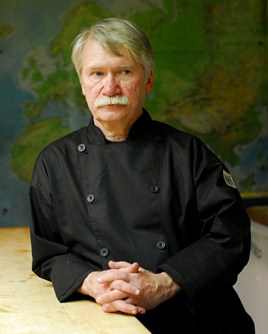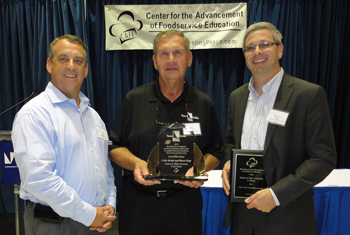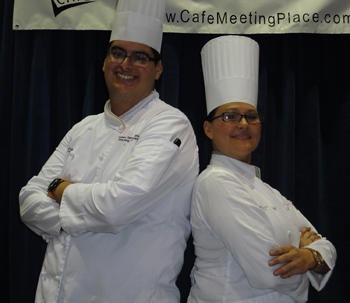Green Tomato: The Pioneer of Pioneer Valley
 Dr. Tso-Cheng Chang was a pioneer of “no pesticides or herbicides” farming in the United States. His farm, which grows vegetables for his award-winning restaurant in Amherst, Mass., not only is one of the largest bean-spout producers in the nation, it also grows schizandra berries—which might be the ginseng of this decade.
Dr. Tso-Cheng Chang was a pioneer of “no pesticides or herbicides” farming in the United States. His farm, which grows vegetables for his award-winning restaurant in Amherst, Mass., not only is one of the largest bean-spout producers in the nation, it also grows schizandra berries—which might be the ginseng of this decade.
Long before “shop local, buy local” became something Americans came to value, Dr. Tso-Cheng Chang grew his own Chinese vegetables to serve at his award-winning restaurant, Amherst Chinese Food, on Main Street in downtown Amherst, Mass. So when in 1983 he converted his farm in nearby Whatley into a small factory designed to mass-produce bean sprouts, it barely caused a ripple on the local business scene.
That same factory on Dr. Chang’s Farm recently celebrated its 30th anniversary with the distinction of being one of the largest soybean- and mung-bean-sprout facilities in the United States.
“You would say from the success of his restaurant and the sprout farm that Dr. Chang epitomizes the American dream, but his story goes beyond that,” says Steven V. Dubin, spokesperson for Dr. Chang Naturals, which grows and wholesales the company’s certified schizandra berries. “In fact, it’s quite fitting that his farm is in a region known as Pioneer Valley because Dr. Chang has pioneered a number of things, most notably ‘no herbicides or pesticides’ farming.”
Chang’s journey began in a small town in Shandong Province, China, where he was born in the late 1920s. He earned an undergraduate degree in agronomy from Taiwan University in 1953 and later emigrated to the United States, where he earned an M.S. in crop science from Michigan State University in 1966.

 OMNI-TV host and associate producer Lucy Zilio visited the Culinary Arts Centre at Centennial College in Toronto recently to take in the sights and aromas of a live kitchen lesson. In a video (110 seconds) on the program’s website, Zilio speaks with chef and professor Samuel Glass about the special focus Centennial’s program places on international cuisine. Visit
OMNI-TV host and associate producer Lucy Zilio visited the Culinary Arts Centre at Centennial College in Toronto recently to take in the sights and aromas of a live kitchen lesson. In a video (110 seconds) on the program’s website, Zilio speaks with chef and professor Samuel Glass about the special focus Centennial’s program places on international cuisine. Visit  Chef Reginald Martin, culinary-arts instructor at Westside High School in Houston, Texas, is the recipient of the Texas Restaurant Association Education Foundation’s 2013 Educator Excellence Award. Martin has been leading Westside’s program since 2008 and has more than 100 students enrolled in the program.
Chef Reginald Martin, culinary-arts instructor at Westside High School in Houston, Texas, is the recipient of the Texas Restaurant Association Education Foundation’s 2013 Educator Excellence Award. Martin has been leading Westside’s program since 2008 and has more than 100 students enrolled in the program.  The great work of chefs and those in the hospitality industry is often gone once guests leave the restaurant, but a new Hall of Fame at the esteemed Le Cordon Bleu College of Culinary Arts in Chicago will showcase the work of the best in the industry. Le Cordon Bleu in Chicago has been chosen to house the new International Food & Beverage Forum “Hall of Fame.”
The great work of chefs and those in the hospitality industry is often gone once guests leave the restaurant, but a new Hall of Fame at the esteemed Le Cordon Bleu College of Culinary Arts in Chicago will showcase the work of the best in the industry. Le Cordon Bleu in Chicago has been chosen to house the new International Food & Beverage Forum “Hall of Fame.” Gabriela Grande, a culinary-arts student at Monroe College in the Bronx, N.Y., has added a victory in the “Lead Like Mike” competition to her list of impressive culinary accomplishments. Grande was the 2010 America’s Best High School Chef winner, a C-CAP student from Food and Finance High School, and the first Monroe culinary student to compete at the American Culinary Federation’s Northeast Regional Conference, where she won a gold medal and finished second overall.
Gabriela Grande, a culinary-arts student at Monroe College in the Bronx, N.Y., has added a victory in the “Lead Like Mike” competition to her list of impressive culinary accomplishments. Grande was the 2010 America’s Best High School Chef winner, a C-CAP student from Food and Finance High School, and the first Monroe culinary student to compete at the American Culinary Federation’s Northeast Regional Conference, where she won a gold medal and finished second overall.  Simply preparing for your classes and delivering material is never sufficient. You have an obligation to yourself, your students and your institution to stay in touch with the industry you represent by building your personal, professional brand.
Simply preparing for your classes and delivering material is never sufficient. You have an obligation to yourself, your students and your institution to stay in touch with the industry you represent by building your personal, professional brand. At the 9th-annual CAFÉ Leadership Conference, four educators earned recognition and professional development for unleashing creativity in the culinary classroom.
At the 9th-annual CAFÉ Leadership Conference, four educators earned recognition and professional development for unleashing creativity in the culinary classroom. Two students’ winning dishes featuring Mexican avocado were enjoyed by attendees of CAFÉ’s 9th-annual Leadership Conference.
Two students’ winning dishes featuring Mexican avocado were enjoyed by attendees of CAFÉ’s 9th-annual Leadership Conference.